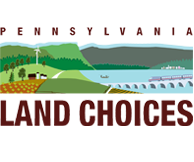
Allegheny Land Trust (ALT) and the Western Pennsylvania Regional Data Center (WPRDC) have just launched Urban Greenprint, an interactive online regional mapping tool that will guide urban greening priorities. Urban Greenprint features a number of land-use data sets from public-sector, nonprofit, and private organizations, and makes them available for public use.
“The tool is an intersectional analysis of the status of all Pittsburgh-area land parcels that is equally accessible to all organizations and individuals,” ALT community conservation director Alyson Fearon said. “It offers opportunities for public engagement and self-education that we hope empowers residents working on land use challenges to take action in protecting their community green spaces.”
Users of Urban Greenprint can view environmental data on a map and interact with regularly updated information about properties in Allegheny County. It is powered by the regional data-sharing infrastructure provided by WPRDC. In addition to developing and hosting the tool, data featured in Urban Greenprint is also available as open data on the WPRDC website.
“The convergence of strong economic, social, cultural and environmental factors presents the Pittsburgh region with a transformational land use management opportunity that is unparalleled in recent times,” Fearon said. “Local economic expansion is spurring development in parts of the city and county, benefitting many residents while potentially leaving others behind. Visionary, community-supported land-use decisions will be needed to best address these issues and maximize opportunities for all the region’s residents.”
ALT hopes Urban Greenprint empowers residents to make their communities more resilient by addressing apparent opportunities to effect community and environmental issues including recreation opportunity, neighborhood revitalization, urban green space preservation, urban gardening/farming, and remediation of issues like flooding, combined sewer overflow, landslides and air quality. This map helps to outline where opportunities to preserve environmentally sensitive and important properties are greatest.






